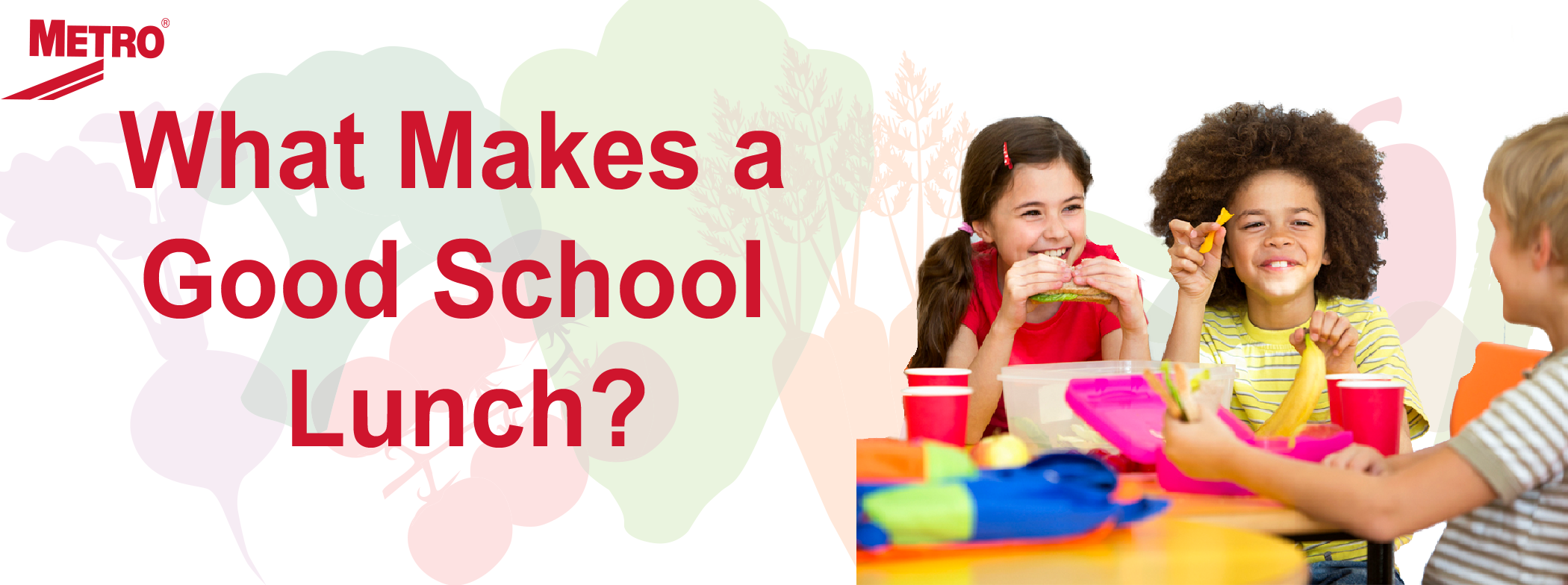Ask a group of kids to name their favorite lunch foods and the answers typically include everything from pizza to tacos, burgers, and cookies for dessert. While it’s important to provide school lunches that excite and please a range of palates, it’s also crucial to offer options that meet nutritional guidelines. To elevate a school lunch to a great meal kids will love, it takes the successful joining of multiple elements.

Needs to Meet Nutritional Standards
The National School Lunch programs serve almost five billion lunches each year. These meals must meet specific nutritional standards set by the U.S. Department of Agriculture (USDA) as updated in 2012. The nutritional standards include increased amounts of vegetables, fruits, and whole-grains, while decreasing that amount of sodium and sugar.
According to SchoolNutrition.org, “Vegetable choices must include weekly offerings of legumes, dark green, and red/orange vegetables.” At least half of the grains must be whole-grain rich.
Needs to offer a Range of Healthy Choices
Adults and kids may not agree on what a “good” school lunch includes, especially when it means more vegetables on the plate and fewer sweet treats. However, studies from the Pew group have shown that when a larger variety of healthy choices are offered, kids tend to eat more of their lunch, which results in less waste. What foods get kids excited to clean their plates?
Offer kids recognizable vegetables and fruits that are easy to eat without any utensils. ChooseMyPlate.gov reports fresh veggies and fruit dippers rank in the Top 10 favorite foods for kids. Carrot sticks, celery, broccoli, grape tomatoes, and red/yellow/orange bell peppers are perfect when paired with yogurt-based, low-fat dips. Apple slices, grapes, pineapple slices, and strawberries also are great for dipping.
Schools that offer a salad bar typically see more kids embrace healthier food choices. But, large volumes of fresh vegetables and fruits can require refrigerated storage that may not be available in all cafeteria kitchens. To keep produce properly chilled, look to insulated cabinets. Insulated refrigeration cabinets that can hold multiple trays of prepared produce make it easier to refill salad bars and other serving stations.
Has to Taste Good
Kids aren’t going to eat it if the lunch doesn’t taste good. Fast food-style options often appeal most to younger eaters and these popular menu items can be made healthier.
Make pizza crust with whole-grain flour and top with low-fat cheese
Offer whole grain pasta in fun shapes for spaghetti and mac-and-cheese recipes
Fill tacos with grilled chicken and fresh veggie toppings plus a light sprinkling of shredded low-fat cheese
Whole grain buns are better for burgers, and then offer fresh toppings like tomato and lettuce
Offer alternatives to beef burgers with turkey burgers and even black bean burgers
Lettuce wraps and roll-ups filled with fresh ingredients are appealing finger-foods
Real fruit smoothies instead of high-fat milk or sugary juices
Want to get kids to try new foods? Have one day each week when a new food/recipe is added as a “taste” or “small bite” alongside a favorite.
